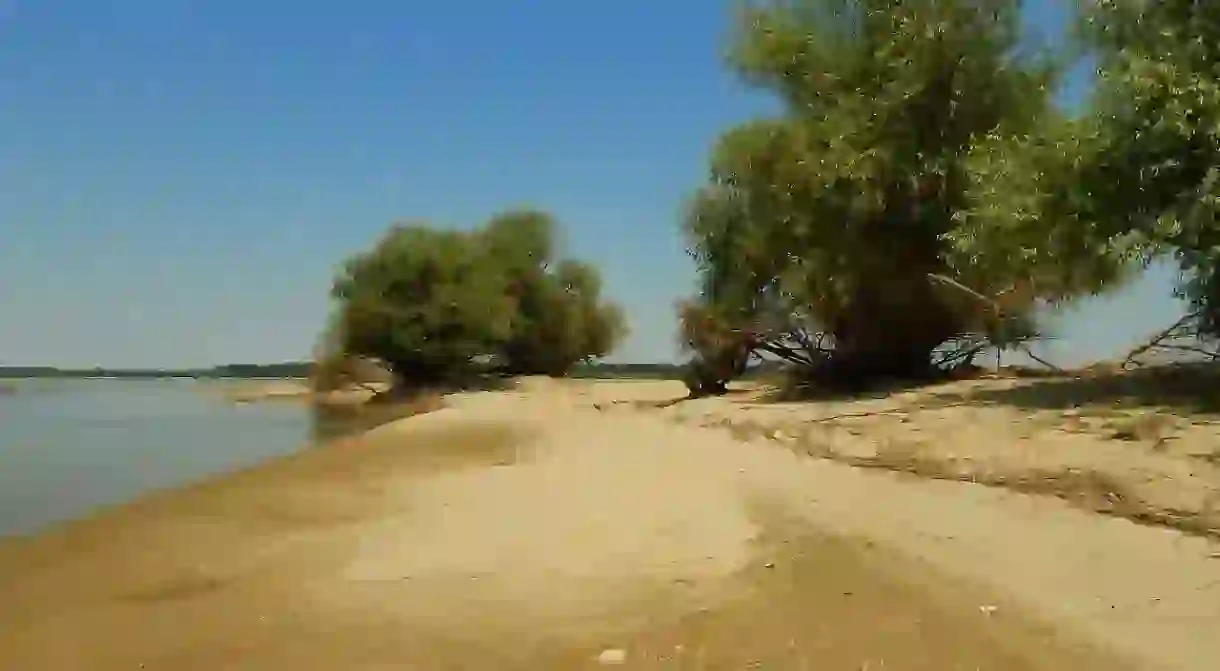A Guide to Exploring the Danube Islands from Bulgaria

The Danube River stretches along most of Bulgaria’s northern border separating it from Romania. The river is dotted with islands and if you visit any of them, be prepared to experience Bulgaria in its wildest state – all islands are uninhabited (except one with a prison on it), most don’t have roads and are rarely visited by people.
Accessibility
None of the Danube islands has a regular boat service, so if you want to visit one, you should go to one of the main towns along the Danube coast (Belene, Tutrakan, Ruse, Vidin, Svishtov) and find a fisherman to take you with his boat. Another option is to rent kayaks and guides to show you around (Tourist Society Prista in Ruse could help you with this). The society also organizes volunteer weekends in the summer to clean the islands from the trash that gets stuck in the shrubs.

Natural reserves
Mainly due to the fact that the islands are not inhabited, their natural habitats have been perfectly preserved and they are largely now natural reserves and protected areas. Birds, plants, algae, fish, and mammals live almost undisturbed by people.
Natural Park Persina comprises of four islands around the town of Nikopol and 19 more around the town of Belene, including the biggest island Belene (also known as Persina). Kalimok-Brashlen is another important reserve, comprising the islands Kalimok, Malak Brashlen, Golyam Brasheln, Mishka, Pyasachnik, Radetski and one unnamed island, where more than 240 bird species live, half of them nesting.

White sands
Some of the Danube islands might surprise you with their white sands and beautiful yet wild beaches. Mishka island near Ruse is a great example. These beaches appear in summer after the level of the river subsides and are different every year.
Growing food and grazing herds
Some of the islands, like Batin near Ruse, are used to grow food and graze animals. Batin also has beautiful sandy beaches.

Concentration camps and prisons
Belene Island (or Persina) is the biggest of the Bulgarian islands in the Danube and probably the one with the most turbulent history. From the 40s to the 60s it was home to a Communist concentration camp where people who disagreed with the political rule of the day were sent, mainly professors, artists, authors. They were forced to live in terrible conditions and many found their death there. Today, a functioning prison is situated on the island along with Persina Natural Park. A few vantage points on the island let visitors see the diverse bird life at home in the swamps and lakes without bothering them, while even a 20 minute drive along the roads of the island will bring you face to face with foxes, hedgehogs, boars, and other wild animals.
Because of the prison, every visitor needs special permission from the Ministry of Justice of Bulgaria, or ( a slightly easier way) they should call the local Belene Island Foundation, which is trying to build a memorial at the site of the concentration camp and take a tour with their volunteers. It’s a good idea to call or send a message at least two weeks before you wish to visit because the appointments are arranged depending the availability of a guide.













